Nara
In 784, Emperor Kammu moved the capital from Heijo-kyo (Nara) to Nagaoka and then Heian-kyo (Kyoto) to escape the meddlesome influence of the powerful Kegon sect of Buddhism on affairs of state.
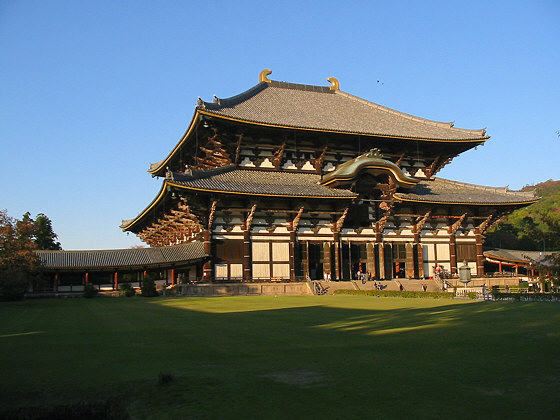
Todaiji Temple, the largest wooden structure in the world but now only two-thirds of its original size.
However, Todai-ji Temple had close links with the imperial family and Kofuku-ji was the clan temple of the powerful Fujiwaras. Nara is mentioned several times in The Tale of Genji.
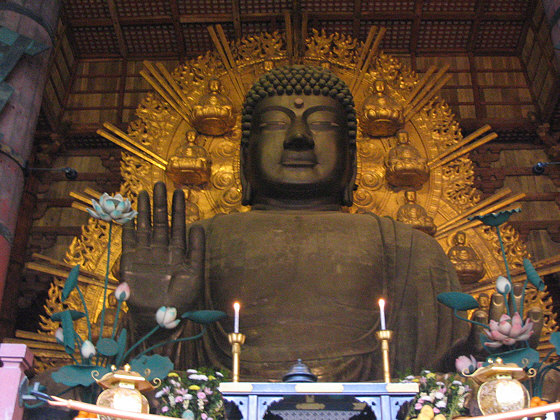
The Great Buddha (Daibutsu) at Todai-ji Temple.
Within the Kofukuji temple complex lies the octagonal Nanendo hall, the ninth temple in the Saigoku Kannon pilgrimage.
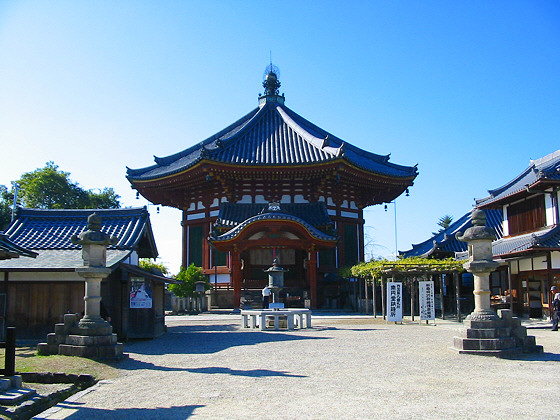
Nanendo Hall.
As recounted in The Tale of the Heike, the militant monks of Kofukuji sided with Prince Takakura against the Taira. In the year 1180, clan chieftan Taira Kiyomori sent an emissary to negotiate with the monks, who promptly seized 60 of his men, decapitated them, and hung their heads in rows beside Sarusawa pond. This outrage lead directly to the burning of Nara.
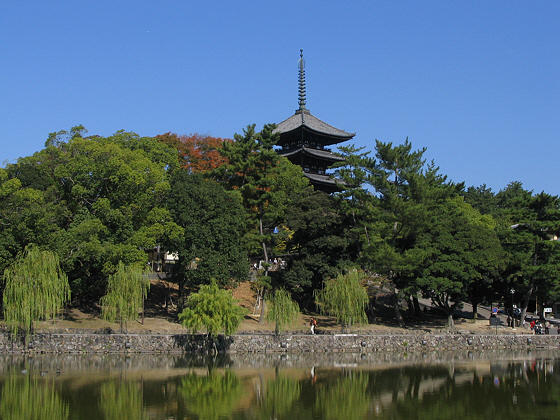
Sarusawa Pond and Kofukuji temple's pagoda.
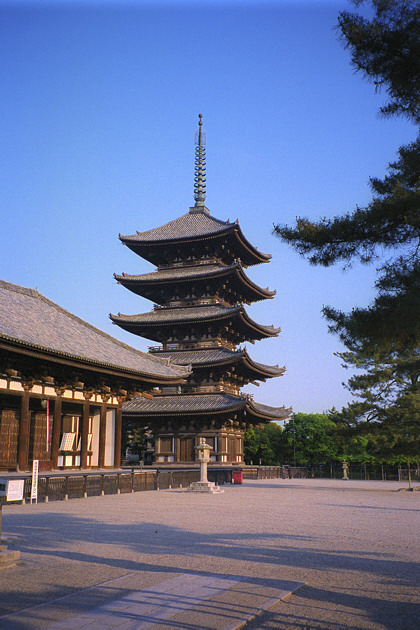
The five-tier pagoda at Kofukuji Temple.


